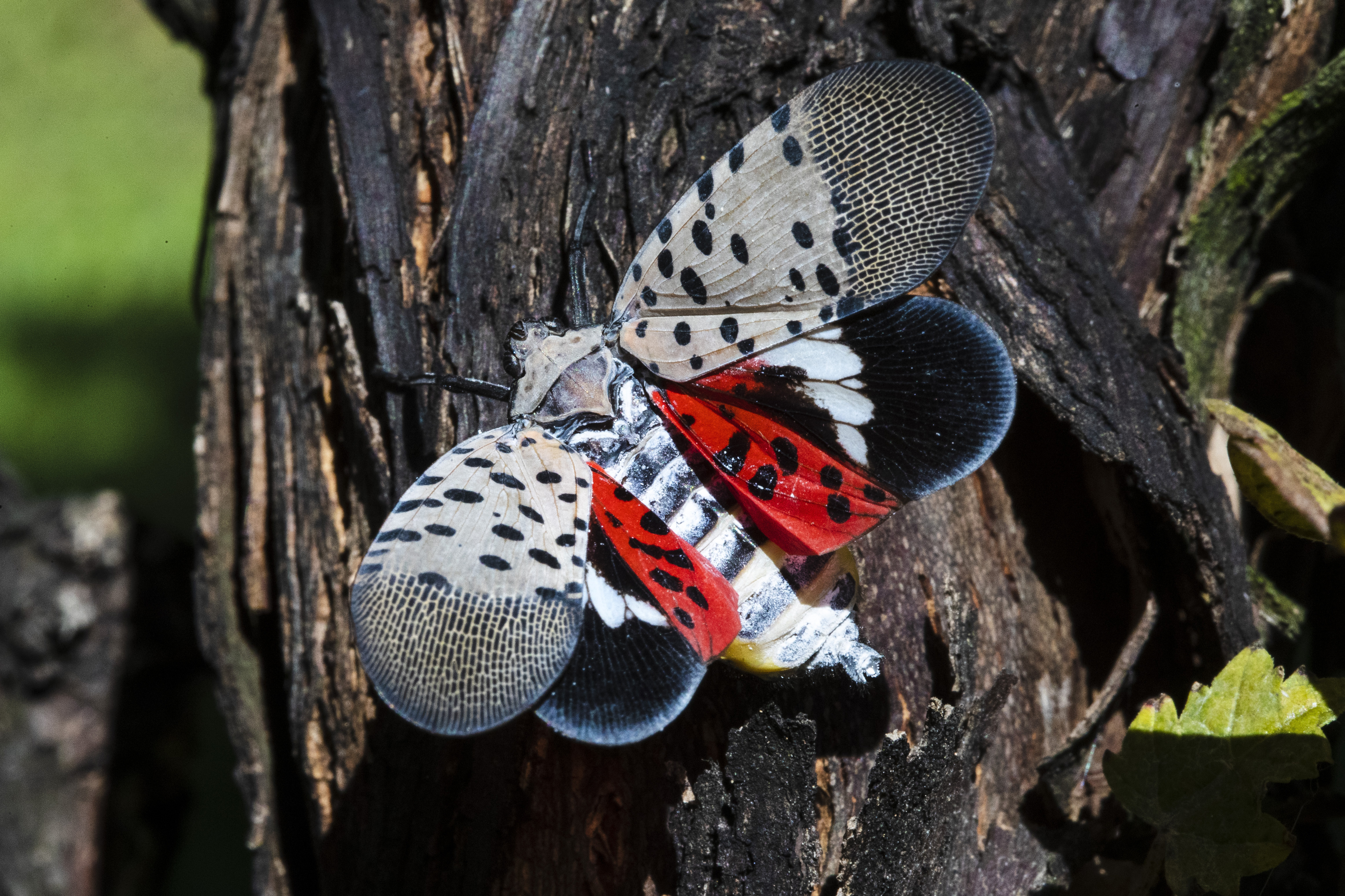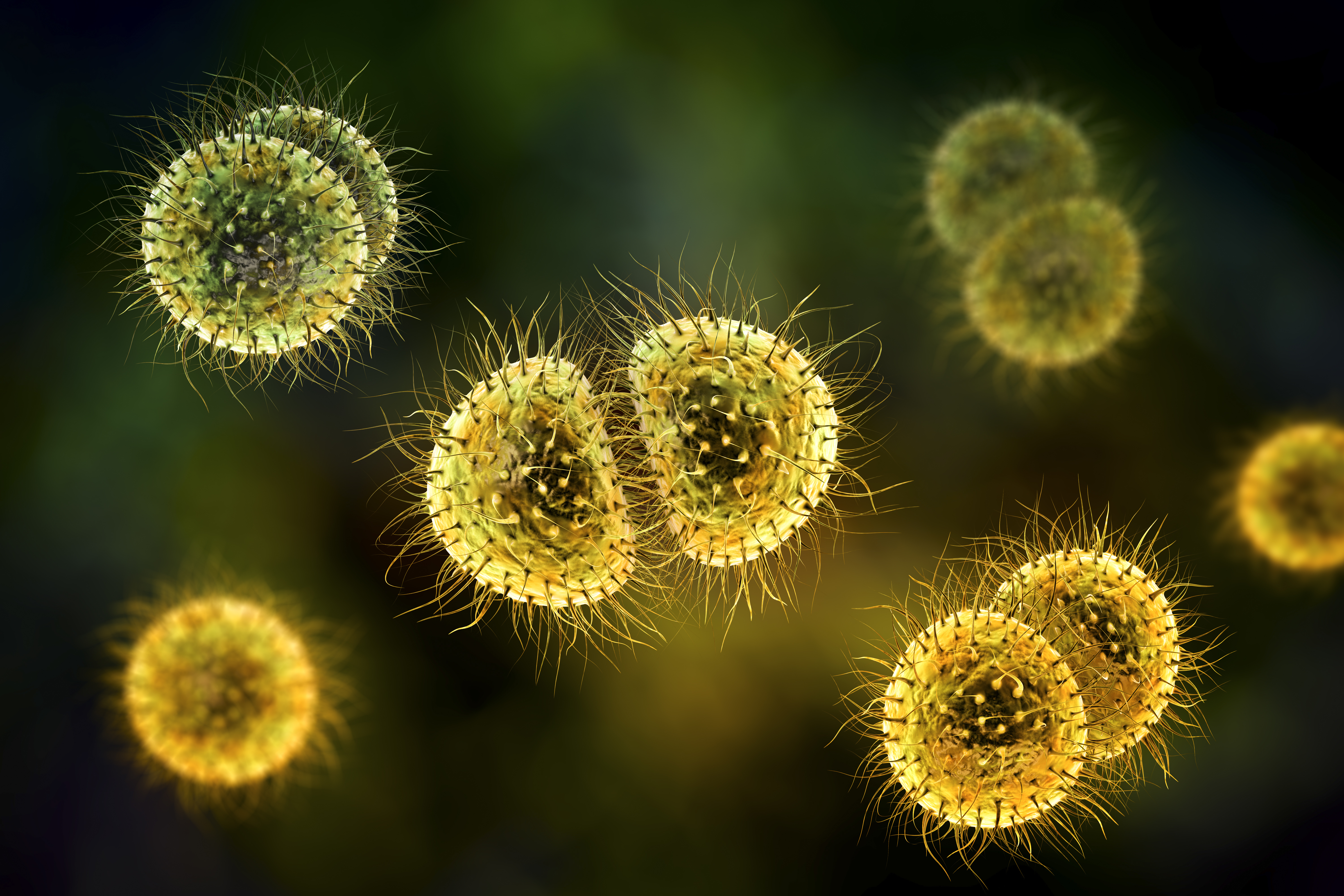The hit HBO show "The Last of Us" may have taken the world by storm this year (and the video game world nearly a decade ago), but the villain in the series has been around much longer than either of them.
Way, way longer. Longer than you and I, or any human ... ever.
Fungi — including the kind featured in the show, called cordyceps — have been around for hundreds of millions of years. Cordyceps, otherwise known as the zombie-ant fungus, have been around for 150 million years.
But the shocking truth is, we don't know a whole lot about them.
Get Tri-state area news and weather forecasts to your inbox. Sign up for NBC New York newsletters.
"We know the very tip of the iceberg," said Dr. João Araújo, a mycologist at the New York Botanical Gardens in the Bronx.
Part of the reason for that is simple: There aren't many schools that offer classes on mycology (the study of fungal biology) or have a mycologist at their disposal.
But Dr. Araújo is not just a fungal expert; his expertise is with cordyceps in particular, making him the perfect person to help break down what cordyceps are and how they act — and how different they are from how they are portrayed on the show.
Cordyceps: A Brief Explainer
"Cordyceps is a group of fungi that has the ability to infect the insects, to manipulate the hosts' behavior, make them real-life zombies," he said.
So yes, they are as terrifying as they sound in the show. But cordyceps don't turn ants into bloodthirsty, undead mutants. Rather, they are much more strategic in getting what they need from the ants in order to survive and spread.
"The fungus goes undercover, before the ants recognize an infected one is infected. So before it starts to exhibit the symptoms of the disease, the cordyceps will remove the ant from their nest and position it in the summit position where the microclimate is ideal for that species to reproduce," Dr. Araújo said.
From there, the cordyceps will kill the host and use its body for nutrients as it produces the mushroom, which will shoot spores on the forest floor. Those spores create a minefield through which other ants will walk, thereby getting infected themselves and starting the process over again.
Dr. Araújo explained that the cordyceps "would never develop inside a nest." He said that an experiment conducted by colleagues showed that when an early stage of the fungus was placed inside the nest, it was either torn apart by the colony, or it was unable to grow at all due to the conditions.
That's why it's important for the fungus to manipulate the host's behavior, so it can bring the ant away from the others.
"They manipulate their behavior in a way that, before it dies, it will leave the colony and therefore avoiding the social immunity that the ant societies exhibit, which is the self-protection," Dr. Araújo said. "When the ants recognize one of their members that are infected by anything — a fungi, a nematode or anything — it will kill this ant and tear them apart, or throw out the nest."
In all, Araújo said it takes about two weeks for ants in a lab to go from infected to manipulation by the cordyceps. But it is different in real-world settings, depending on species of ant and of the zombie-ant fungi: some take a year, others take just a matter of weeks.
So just how many cordyceps are there in the world, and are any near New York? Dr. Araújo said there are about 350 species within the genus he has been studying — only 10% of which can manipulate the host's behavior. He added that there are about 30 species of the zombie-ant fungi known, but there may be up to 600 species.
More News
While they are most commonly found in Asia, there are a few that can be found in the United States as well.
"I have described three species for the United States: One from Florida, other one from South Carolina, another one from Missouri," said Dr. Araújo.
If you were relieved that none are closer to the tri-state, don't get too comfortable.
"We are at this moment working on describing a new species from Pennsylvania," he said.
Adding a bit of nightmare fuel to it: With the possible new discovery in Pennsylvania, Araújo said there was a parasite found that infects the fungus infecting the ant.
Could We See a Zombie Fungi Pandemic Like in 'The Last of Us'?
But given how little we ultimately know about fungus and cordyceps in particular, is there a chance what Pedro Pascal, Bella Ramsey and company encountered on the show could happen in real life? Could cordyceps actually infect humans and turn them into the terrifying creatures hunting for blood?
Hypothetically, it's not impossible. But don't count on it.
"It's very unlikely because, these fungi, they co-evolved to infect ants. It's one species of fungus to infect one species of ants, so they're very specific," said Dr. Araújo. "One species of fungus cannot infect even one of the closest relatives of its host. Just that species of ant."
For cordyceps to go from just one particular type of ant, the carpenter ant, all the way to a human would be "a huge leap," according to Dr. Araújo, with a slew of obstacles to overcome in order for them to survive and act the way they do with the insects.
"How many genetic changes would be required for them to recognize humans as a suitable host, to…overcome the human immune system, and then to do their stuff: Fill the human body with fungal cells and influence the brain. It's really complex mechanisms they would need to readapt from the insects," Dr. Araújo said.
And considering cordyceps have spent 50 million years only being able to infect one type of ant, it's pretty safe to say a so-called "host jump" isn't in the cards. The idea that it could be spread via an infected food supply, as it occurs in "The Last of Us," just isn't feasible because the fungus would die.
Even if it were to theoretically happen, you can be rest assured that none of us would be around to see it happen.
"To change to a human would be a gigantic change, and I don't think we'll be alive to see that. And I don't think it would happen naturally in the next millions of years," Dr. Araújo said. "Who knows, money can do everything nowadays."
But suspending reality for a moment: In the event that cordyceps somehow did adapt to infect humans, how long would it take to spread in, say, a densely populated place like New York City?
We already got our answer three years ago, Dr. Araújo says.
"Hypothetically, if this fungi can do it, it would be quite easy to be spread in New York, as we saw in COVID," he said. "In very short period of time, the whole world was sick."
There are a few things that would be radically different about a theoretical cordyceps pandemic versus what is shown in the series. First, the spread or transmission of the fungus would not be the same.
"If we bring more in the true biology of cordyceps, they are not transmitted by biting. One infected ant does not infect the other one by biting," said Dr. Araújo.
Also, the only way that the fungus can actually get to the stage where it is able to spread is by killing the host. There would be no infected individuals who have been walking around for years without dying, as is seen in the show and games. If that were the case, the fungus would never get a chance to spread, according to Araújo.
"In the series, one person gets bitten and the next day it's already a zombie. And it keeps biting people, and it's more like a vampire type of thing," he said. "For fungi, it's completely different. It has to kill the host. It's a requirement to produce the fruiting body."
More Health
Fungus in the Real World: Friend More Than Foe
The cordyceps seen in "The Last of Us" are not the only fungal scare that 2023 has had to offer so far. In March, the Centers for Disease Control and Prevention said that one particular fungus that is often drug-resistant had been spreading at an "alarming rate" through U.S. healthcare facilities.
Candida auris, first identified in Asia in 2009, is potentially deadly for hospitalized patients, particularly those with multiple medical problems or are immunocompromised. It was first detected in the U.S. a decade ago, when it was limited to NYC and Chicago, but has since been found in more than half of all U.S. states, spreading most in long-term care hospitals.
In New York alone, there were 379 cases in 2022, and already 72 through the last week of March 2023. Not before 2020 had there ever been more than 178 cases in a year for the state, according to the New York Department of Health.
Symptoms can vary greatly, but simple flu- or cold-like symptoms of fever and chills are common. Experts believe that the cause for the surge in fungal cases comes as a result of a decrease in infection control during the COVID-19 pandemic due to staff and equipment shortages that became more common, as well as more antimicrobial use among the population.
But despite growing fears of what the fungus could represent, the state's acting health commissioner, Dr. James McDonald, said there remains little risk to the general public from Candida auris. It can be prevented from spreading with hand washing, cleaned surfaces and protective equipment, he said.
Though fungi only seem to be talked about when there's some sort of outbreak (whether fictional or real), which may only fuel mycophobia, not only can we greatly benefit from them — in reality, we need them.
"Without fungi, we wouldn't be here. Let's start with that. Fungi were one of the ones responsible for the transition, for the plants, from the aquatic to land," Dr. Araújo said. "They were facilitating the absorption of the nutrients from the soil, because [plants] didn't have roots in the beginning."
Plants use fungi for protection not only from predators and parasites, but also from long dry periods without precipitation. Dr. Araújo recalled a study that found fungi eating radioactive material in Chernobyl, and "breaking it down into harmless compounds."
As for humans, aside from being a food source, fungi could be used to protect crops as a sort of natural pesticide. While he can see cordyceps potentially becoming a good candidate to help address the booming spotted lanternfly population in the tri-state, Araújo believes it's still early to tell if they would be effective as a pesticide overall, as it wouldn't be going after a variety of insects — just one.
"For that we need to understand way better the diversity of this fungi, because we know a tiny percentage of them," said Dr. Araújo. "Once we describe and we understand the...fungal species that are infecting that particular species of insect, then we can introduce the fungus to control just that pest — not any other insect in that region. So I think this would be game-changing for that."
Fungi have even contributed to medicine. Penicillin, widely considered one of the most significant medical discoveries of the 20th century, came from a fungus. There is also a fungus closely related to cordyceps that led to the isolation of cyclosporine, which is used to prevent organ rejection after a transplant is performed, Dr. Araújo said.
It's not that Araújo doesn't like "The Last of Us" and gives it an eye-roll as something beneath his station. He played the original game and has watched the show, and said both are "beautiful" and well-done. When he was a Ph.D. student, his academic adviser was the scientific advisor for the game as it was being made, and was in his lab as the game was gaining popularity.
And he's glad the series has gotten people talking about his passion, as he thinks more attention will help lead to further exploration into the world of fungus.
But quite frankly, he believes that the actual cordyceps are far more fascinating than the scary ones seen in the series.
"Their biology is way more interesting than it is in 'The Last of Us.' The real-life species are way cooler than on the series," Araújo said with a chuckle. "How microbes can control animals — mind-blowing, I think. And the benefits of fungi are immense."





